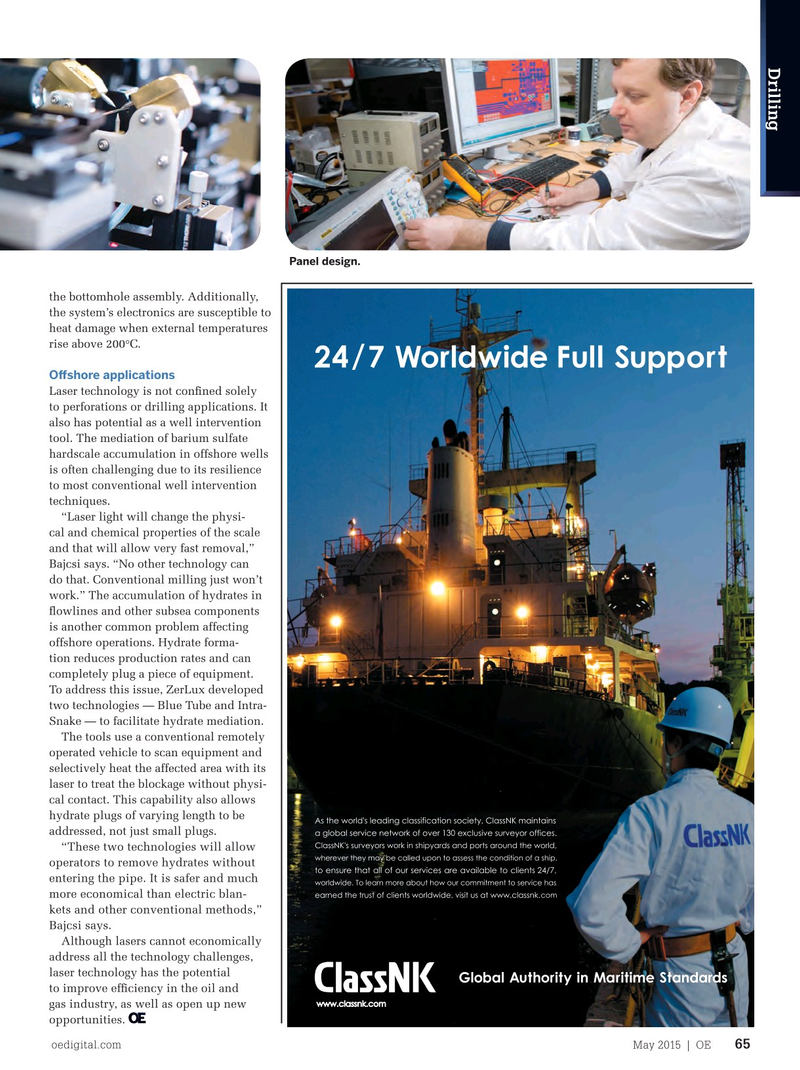
Page 63: of Offshore Engineer Magazine (May/Jun 2015)
Read this page in Pdf, Flash or Html5 edition of May/Jun 2015 Offshore Engineer Magazine
Drilling
Fiber optics at work. Panel design.
the bottomhole assembly. Additionally, the system’s electronics are susceptible to heat damage when external temperatures rise above 200°C.
Ofshore applications
Laser technology is not confned solely to perforations or drilling applications. It also has potential as a well intervention tool. The mediation of barium sulfate hardscale accumulation in offshore wells is often challenging due to its resilience to most conventional well intervention techniques. “Laser light will change the physi- cal and chemical properties of the scale and that will allow very fast removal,”
Bajcsi says. “No other technology can do that. Conventional milling just won’t work.” The accumulation of hydrates in fowlines and other subsea components is another common problem affecting offshore operations. Hydrate forma- tion reduces production rates and can completely plug a piece of equipment.
To address this issue, ZerLux developed two technologies — Blue Tube and Intra-
Snake — to facilitate hydrate mediation.
The tools use a conventional remotely operated vehicle to scan equipment and selectively heat the affected area with its laser to treat the blockage without physi- cal contact. This capability also allows hydrate plugs of varying length to be addressed, not just small plugs. “These two technologies will allow operators to remove hydrates without entering the pipe. It is safer and much more economical than electric blan- kets and other conventional methods,”
Bajcsi says.
Although lasers cannot economically address all the technology challenges, laser technology has the potential to improve effciency in the oil and gas industry, as well as open up new opportunities. oedigital.com May 2015 | OE 65
August.indd 12 7/16/14 2:16 PM 062_OE0515_DC3_Lasers.indd 65 4/20/15 8:14 PM

 62
62

 64
64